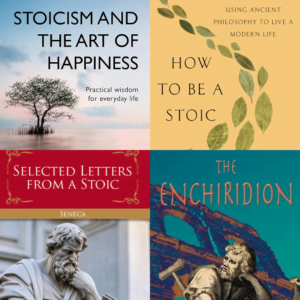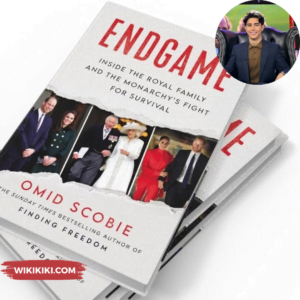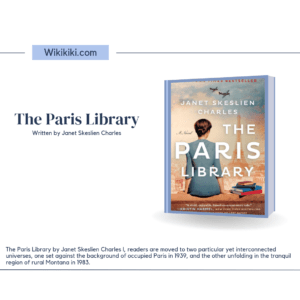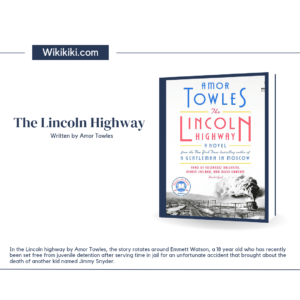If you’re just starting out on your literary journey, you’re in for a real treat. This Classic literature for beginners gives a treasure trove of timeless stories that has the hearts and minds of readers for generations. Whether you’re drawn to romance, adventure, tragedy, or social commentary, there’s something for everyone in these age-old tales.
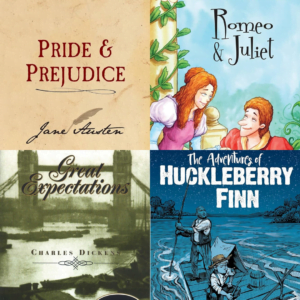
Top 5 Classic Literature for Beginners
1. Pride and Prejudice
- Author: Jane Austen
- Type Of Work: Novel
- Published: Originally on 28 January 1813
- Genres: Romance novel, Satire, Historical romance, Regency romance, Adventure fiction, Novel of manners
- Language: English
- Time And Place Written: England, between 1796 and 1813
- Publisher: Thomas Egerton of London
- Setting (Time): Some point during the Napoleonic Wars (1797–1815)
- Setting (Place): Hertfordshire and Derbyshire
- Narrator: Third-person omniscient
- Themes: Love, Reputation, Class
- Pages: 300 to 350

I’m excited to introduce you to a literary masterpiece that has readers for over two centuries, “Pride and Prejudice” by the Jane Austen. Published in 1813, this novel isn’t just a story; it’s a journey into the 19th-century England.
Pride and Prejudice isn’t just a love story, it explores the complexities of human relationships and societal norms. Austen goes into the impact of social class on marriage, the consequences of prejudice and misunderstanding, and the power of personal growth. As you go into the lives of the Bennet family and their acquaintances, you’ll find questions about love, identity, and societal expectations.
Austen’s attention to detail brings this era to life, inviting you to stroll through the picturesque countryside and mingle with characters from all walks of life. Whether you’re drawn to the opulence of Pemberley or the quaint charm of Longbourn, you’ll feel as though you’ve been transported to a time of romance.
From the Elizabeth Bennet to Mr. Darcy, each character is richly drawn and unforgettable. You’ll find yourself cheering for Elizabeth’s wit and independence, chuckling at the antics of Mr. Collins, and swooning over the complex allure of Mr. Darcy. Austen’s keen insights into human nature ensure that these characters feel as real and relatable as your own friends and family.
While Pride and Prejudice may be set in a specific time and place, its themes and messages transcend cultural boundaries. Whether you’re a romantic, a keen observer of society, or simply a lover of great literature, this classic literature book has something to offer. Its dialogue, plot twists, and insights into human nature ensure that it remains as real as today.
For beginners, it’s a classic that offers romance, wit, and social commentary. Whether you’re in the mood for a love story or a thought-provoking exploration of societal norms, this book delivers on all fronts. Plus, with its engaging narrative and unforgettable characters, it’s the kind of literature that you’ll want to revisit time and time again.
Also Read: Endgame: Omid Scobie Insights About the Royal Family Struggles
2. Great Expectations
- Originally published: August 1861
- Author: Charles Dickens
- Language: English
- Time And Place Written: London, 1860-1861
- Characters: Pip, Miss Havisham, Estella, Abel Magwitch, MORE
- Genre: Novel, Bildungsroman
- Date Of First Publication: Published serially in England from December 1860 to August 1861, published in book form in England and America in 1861
- Publisher: Published in England by Chapman & Hall, published in America by Harper & Brothers
- Pages: 544 (first edition 1861)
The characters, You’ll meet Pip, a guy with dreams bigger than his pocket, and Miss Havisham, who’s got a whole backstory that’ll make your jaw drop. And that’s just the start, Each character is like a puzzle piece.

Dickens doesn’t shy away from tackling the big issues, and he goes headfirst into questions about money, status, and what it really means to be successful. Trust me, it’ll make you think twice about how you see the world.
But it’s not all heavy stuff, Great Expectations is packed with plot twists that’ll keep you guessing until the very end. Seriously, just when you think you’ve got it all figured out, Dickens throws another curveball your way.
And let’s talk about the setting. From the eerie halls of Satis House to the streets of London, you’ll feel like you’re right there alongside the characters.
But what really sets Great Expectations apart is its universal themes. Sure, it was written over a hundred years ago, but the issues it tackles, ambition, love, betrayal, are just as relevant today as they were back then.
And hey, if you’re into movies or TV shows, there are tons of adaptations out there to watch, once you’ve finished the book.
Dickens isn’t afraid to tackle the big stuff, and Great Expectations is chock-full of it. We’re talking social class, identity, ambition, you name it, Dickens covers it. And through Pip’s journey from rags to riches (and back again), we’re forced to confront our own beliefs about success and what it truly means to live a fulfilling life.
But let’s not forget about the plot twists, Just when you think you’ve got it all figured out, Dickens pulls the rug out from under you and leaves you gasping for air. Seriously, this guy was the master of suspense, and Great Expectations is proof of that.
3. Romeo and Juliet
- Originally published: 1597
- Author: William Shakespeare
- Adapted from: The Tragical History of Romeus and Juliet
- Date Of First Publication: 1597 (in the First Quarto, which was likely an unauthorized incomplete edition); 1599 (in the Second Quarto, which was authorized)
- Characters: Romeo, Juliet, Mercutio, Tybalt, Friar Laurence
- Publisher: Thomas Creede
- Genre: Tragedy
- Settings (Time): Renaissance
- Time And Place Written: London, mid-1590s
- Settings (Place): Verona and Mantua
- Pages: 480

Set in the streets of Verona, Italy, Romeo and Juliet tells the story of two star-crossed lovers from feuding families, the Montagues and the Capulets. When Romeo, a Montague, and Juliet, a Capulet, meet at a masquerade ball, sparks fly instantly. Despite their families’ bitter rivalry, they go on a romance, secretly marrying in hopes of uniting their houses. Their love is put to the ultimate test as violence erupts between their clans, leading to a series of events that culminates in tragedy.
From the passionate Romeo to the innocent and lovestruck Juliet, Shakespeare crafts a cast of personalities that leap off the page. You’ll find yourself rooting for the young lovers as they go through the waters of love, alongside a colorful ensemble of supporting characters, including the fiery Tybalt, the wise Friar Laurence, and the bawdy Nurse.
Love, fate, and the power of feuds, these are just a few of the thought-provoking themes that permeate “Romeo and Juliet.” Shakespeare goes deep into the complexities of human emotion, exploring the intoxicating highs of passion and the lows of loss. Whether you’re pondering the role of destiny in our lives or contemplating the consequences of unchecked hatred, this play will leave you with plenty to ponder long after you’ve turned the final page.
Romeo and Juliet is full of juicy twists, intense confrontations, and heartbreaking soliloquies that will keep you on the edge of your seat. Shakespeare’s masterful use of language and imagery adds layers to every scene.
Well, for starters, it’s a literary classic for a reason. Shakespeare’s poetic prose and themes continue to resonate with readers of all ages.
Also Read: The Paris Library : Summary, Lessons and Review
4. The Adventures of Huckleberry Finn
- Originally published: 10 December 1884
- Author: Mark Twain
- Genres: Satire, Humor, Children’s literature, Adventure fiction
- Time And Place Written: 1876–1883; Hartford, Connecticut, and Elmira, New York
- Publisher: Charles L. Webster & Co.
- Characters: Huckleberry Finn, Jim, Tom Sawyer, Pap Finn, Aunt Polly, Toad of Toad Hall
- Setting (Time): Before the Civil War, 1835–1845; Twain said the novel was set forty to fifty years before the time of its publication
- Setting (Place): Mississippi River town of St. Petersburg, Missouri
- Pages: 362
Follow the escapades of Huck Finn, a young boy fleeing his abusive father, and Jim, a runaway slave seeking freedom. As they float down the Mississippi River on a raft, they encounter a series of colorful characters and go through the moral dilemmas of a society torn apart by slavery and prejudice. From faking their own deaths to confronting the harsh realities of racism, Huck and Jim’s journey is filled with excitement, danger, and moments of reflection.

Mark Twain populates his novel with characters who leap off the page. Huck Finn, the protagonist, has the spirit of adventure and rebellion against societal norms. Jim, the runaway slave, is a symbol of resilience and the fight for freedom in the face of oppression. Along the way they encounter con artists, feuding families, and other colorful personalities who challenge their beliefs and shape their journey.
The Adventures of Huckleberry Finn struggles with themes that resonate even today. One of the central themes is the quest for freedom, both physical and mental. Huck and Jim’s journey down the river represents their search for liberty and self-discovery in a society that seeks to confine them. The novel explores the moral complexities of right and wrong, particularly in relation to issues of race, justice, and societal expectations.
Mark Twain uses satire and irony to critique the hypocrisies and injustices of antebellum Southern society. Through Huck’s innocent yet astute observations, Twain exposes the absurdity of racism and the failings of the so-called civilized world. By confronting readers with uncomfortable truths, “The Adventures of Huckleberry Finn” challenges us to reflect on our own prejudices and assumptions.
This classic continues to capture readers of all ages with its thrilling adventures, rich characters, and thought-provoking themes. Whether you’re drawn to its history, its relevance, or simply its charm, The Adventures of Huckleberry Finn will offer an unforgettable reading experience that will stay with you long after you’ve turned the final page.
5. To Kill a Mockingbird
- Originally published: 11 July 1960
- Author: Harper Lee
- Time And Place Written: Mid-1950s; New York City
- Date Of First Publication: 1960
- Publisher: J. B. Lippincott
- Characters: Atticus Finch, Boo Radley, Jean Louise Scout Finch
- Setting (Time): 1933–1935
- Setting (Place): The fictional town of Maycomb, Alabama
- Genres: Domestic Fiction, Thriller
- Pages: 281

Set in the fictional town of Maycomb, Alabama, during the 1930s, the story unfolds through the eyes of Scout Finch, a young girl going through the complexities of race, class, and morality. Alongside her brother Jem and their father Atticus, a principled lawyer.
From the wise and compassionate Atticus Finch to the enigmatic Boo Radley, the characters in this novel are richly drawn and unforgettable. Each character, no matter how minor, contributes to the story, making Maycomb feel like a place that truly exists beyond the pages of the book.
Set in the fictional town of Maycomb, Alabama, during the 1930s, “To Kill a Mockingbird” follows the Finch family as they go through the complexities of small-town life. The central plot is around Atticus Finch’s defense of a black man, Tom Robinson, who has been falsely accused of raping a white woman.
What sets “To Kill a Mockingbird” apart is its narrative perspective. The story is told through the eyes of Scout Finch, a young girl whose innocence is contrast to the injustice and bigotry that surround her. This unique perspective allows readers to see the world of Maycomb through fresh eyes, prompting us to question our own assumptions and biases.
Despite being set in the 1930s, “To Kill a Mockingbird” remains as relevant today as it was when it was first published in 1960. Classic Literature exploration of racial inequality and social justice continues to resonate with readers of all ages, reminding us of the importance of empathy, compassion, and standing up for what is right.
Also Read: The Lincoln Highway: Summary, Lessons and Review


